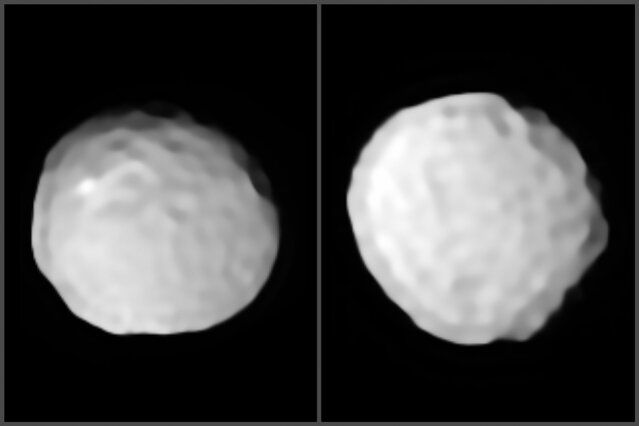New images reveal that one of the strangest asteroids in the solar system is also the most covered in craters.
Pallas, at 318 miles (512 kilometers) in diameter, is the third-largest asteroid in the asteroid belt between Mars and Jupiter, accounting for about 7% of the region's mass. When Pallas was discovered in 1802, it was just the second asteroid ever found, and its discoverer, German astronomer Heinrich Wilhelm Matthäus Olbers, originally classified it as a planet.
Pallas has long been known to follow a strange path through space. It plunges in and out of the main belt as it follows a path around the sun that's heavily skewed compared to the orbits of the planets. Pallas flings itself northward and southward above and below the plane of Earth's orbit around the sun, and a collection of smaller objects trails the asteroid.
Continued...
Source
Pallas, at 318 miles (512 kilometers) in diameter, is the third-largest asteroid in the asteroid belt between Mars and Jupiter, accounting for about 7% of the region's mass. When Pallas was discovered in 1802, it was just the second asteroid ever found, and its discoverer, German astronomer Heinrich Wilhelm Matthäus Olbers, originally classified it as a planet.
Pallas has long been known to follow a strange path through space. It plunges in and out of the main belt as it follows a path around the sun that's heavily skewed compared to the orbits of the planets. Pallas flings itself northward and southward above and below the plane of Earth's orbit around the sun, and a collection of smaller objects trails the asteroid.
Continued...
Source






















